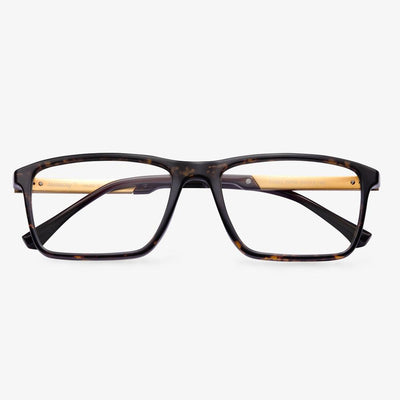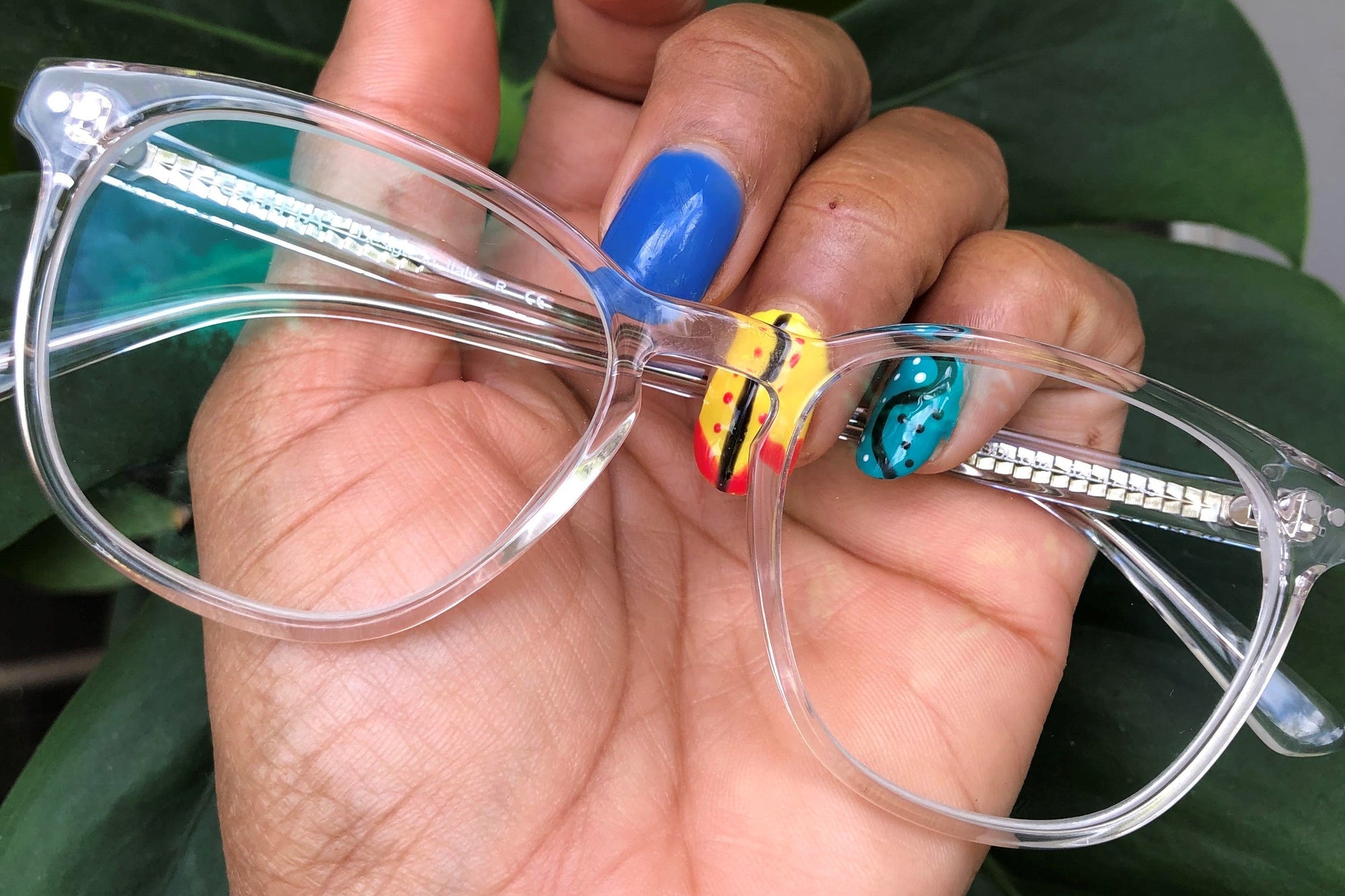Always wear or take off glasses with both hands.
Because there is no protection of the lenses ring, it is only supported by two temples. When taking off and wearing, it should be carried out with both hands, holding the temples of the frame and gently. Using only one hand will destroy the balance of the left and right temple, easy to produce deformation of the frame.
Different Types of Progressive Lenses
The short corridor progressive lenses that are designed to fit into small frames. They trade practically for a more fashionable look. Some people have difficulty transitioning to short corridor progressive because of the lens size and vision can feel more distorted sometimes because of this.
Transition progressive lenses are the last type. They are a brand of photochromic lenses. These lenses darken when exposed to UV light to provide shade for your eyes. They operate as a useful alternative to sunglasses.
What are the origins of saddle bridge glasses?
Rimless glasses were introduced in 1880 and were popular until the 1950s. Rimless glasses made in 1880 and 1920 lacked a nose pad. Instead, they use a saddle bridge, so they were sometimes called saddle bridge glasses. Horses are the main means of transportation. Early rimless saddle glasses were designed to be close to the face. Rimless glasses with nose pads were introduced in 1921. The nose pad keeps the glasses farther away from the face. In addition, frames can be made much larger.
How to Choose Glasses for Big Heads?
In this section, we will show you how to choose an eyeglasses frame for large heads. If you do not know how to choose, keep on your reading to find some solutions.
Rectangular frames: Rectangular frames add angle and can slim down the appearance of a larger head. So, if you have a big head, try the rectangular frames glasses.
Oversized frames: if you have a big head, the oversized frames would be a good choice. Oversized glasses will balance out your larger features.
Wayfarer frames: whether your style is retro or geek chic, you will find a perfect fit in trapezoidal wayfarer. The thick angular frames offset rounder cheeks and draw attention down from the forehead. So, if you have a large head, try this style.
When choosing glasses for large heads, you should also find the right shape and color for your signature look and style. While there are a lot of glasses styles for big heads, you should consider glasses with long enough temple length, the length between the hinge of your frames and where they bend around the ear. This measurement is critical for overall comfort, especially on your temples and near your ears.
So, from the above information, you have learned how to choose glasses for big heads.
What are bendable glasses called?
Bendable frames, or memory metal frames, are metal frames that can be twisted, bent, and shattered without breaking or losing their original shape. It's made of a kind of smart metal that has a memory. Its microstructure has two relatively stable states. At high temperatures, the alloy can be changed into any shape you want. Memory metals are mainly nickel-titanium alloy and other materials. The structure of these alloys varies with temperature in the solid-state, the shapes of these alloys can be changed as needed, and will automatically return to their original shape at a given temperature. One unique aspect is its ability to return to its original shape, although the frame has been twisted, bent, or crushed. They are lighter and more durable than traditional metal frames. The bendable frames are made of composite metal alloys for bending properties. These lenses can be twisted and bent, and when they are released, they return to their original shape.
What's wrong with your not clear phone's screen, low brightness, or even black screen when wearing polarized sunglasses?
There is a polarizing plate in the display structure of the mobile phones, which comes from the photoelectric modulation effect of the display screen. There is a polarized light absorption axis in the polarizing plate, which is consistent with the polarized light absorption principle of the polarized sunglasses. If the polarization absorption axes of the two are parallel, the screen can be seen. When they are perpendicular to each other, the light emitted by the screen will be absorbed by the sunglasses, and the light cannot reach the eyes, leading to the phenomenon of the black screen or low brightness. There may be differences in the direction of the absorption axis of the polarizer. So after wearing the polarized lenses, when you see low brightness or black screen, there are two different situations: landscape screen and portrait screen.
Does blue light cause damage to the eyes?
Businesses often associate blue light with mobile phones and computers that everyone frequently touches. There are also many terrible explanations about blue light on the Internet, ranging from causing damage to the eyes to causing cancer. Therefore, in recent years, mass media and academic circles have caused heated discussions about the possible impact of blue light on eye health.
It is believed that the reason why blue light harms the eyes is that blue light is not like ultraviolet light which is absorbed by the cornea and lens so that it cannot reach the retina. Blue light can reach the retina through the refractive medium of the eye, and over time it will cause the aging and functional degradation of the retina. But in fact, the eyes have many protection mechanisms in the process of evolution, such as squinting, pupil contraction, lutein contained in the macula of the retina, the anti-oxidant repair mechanism of the retina, etc., which can protect our eyes from the damage of blue light. Also, after scientific testing, the blue light emitted by electronic products is a few percent of the intensity of blue light in natural light, which means that as long as the electronic products are not used continuously every day (for example, more than 8 hours a day), blue light will not be causes obvious damage to the eyes.











































